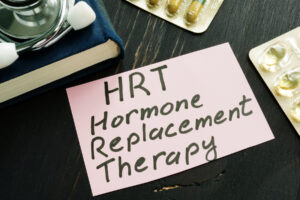HRT: Hormone Therapy
 Hormone replacement therapy (HRT) refers to any medication that contains female hormones. Women who are assigned female at birth (ciswomen) usually take it during menopause to replace the estrogen that their body stops making at this time. However, transwomen also take hormone replacement therapy to induce physical change caused by female hormones and promote the matching between gender identity and physical characteristics. Whether belonging in the former or the latter category brought you here, this piece informs you on both!
Hormone replacement therapy (HRT) refers to any medication that contains female hormones. Women who are assigned female at birth (ciswomen) usually take it during menopause to replace the estrogen that their body stops making at this time. However, transwomen also take hormone replacement therapy to induce physical change caused by female hormones and promote the matching between gender identity and physical characteristics. Whether belonging in the former or the latter category brought you here, this piece informs you on both!
Replacing Estrogen After Menopause
Two main types of estrogen therapy are given to ciswomen after menopause: systemic hormone therapy with a higher dose of estrogen that is absorbed through the body in the form of pills or cream, and low-dose vaginal products (cream or tablets) that minimize the amount of estrogen absorbed by the body. The second type is mainly used to treat the vaginal and urinary symptoms of menopause.
Feminizing Hormone Therapy
The purpose of feminizing hormone therapy is to block the action of the hormone testosterone. Estrogen is also prescribed to reduce the production of testosterone on the body and induce development of feminine secondary sex characteristics. If it is started before the changes male puberty hormones cause, then male secondary sex characteristics can be completely avoided.
What are the Risks?
For menopausal ciswomen, HRT has been found to increase the risk of heart disease, stroke, blood clots, and breast cancer. Those risks depend on the age of the patient, as women older than 60 or those who start therapy 10 years after menopause are at greater risk. Whether estrogen is given alone or with progestin can also affect the amount of risk menopausal women may face, as does each person’s individual family health history. Risk of cancer, heart disease, stroke, blood clots, liver disease and osteoporosis are factors that help determine if HRT is appropriate.
Transwomen who opt for HRT may face issues with fertility and sexual function, among other risks, including weight gain, high blood pressure, potassium, and triglycerides, type 2 diabetes, cardiovascular disease, excessive prolactin in your blood, and increased risk of breast cancer.
Benefits of HRT
If you are experiencing symptoms of menopause, such as vaginal dryness, itching, discomfort with intercourse, and the infamous hot flashes and night sweats, chances are HRT will help you alleviate those issues. Systemic estrogen also helps with osteoporosis and can lead to less bone loss and decrease the risk of fractures. If you are experiencing early menopause or estrogen deficiency, HRT can help not only with osteoporosis, but also with reducing the risk of heart disease, stroke, dementia, and mood changes.
If you are seeking HRT as part of your gender-affirming journey, then you already know that it will lessen the burden of gender dysphoria. Setting out to achieve the desired secondary sex characteristics also greatly reduces psychological and emotional distress, leading to improved mental, social, and psychological functioning. Sexual satisfaction is also known to be a positive effect of HRT among trans individuals, as is an overall improved quality of life and self-esteem.
